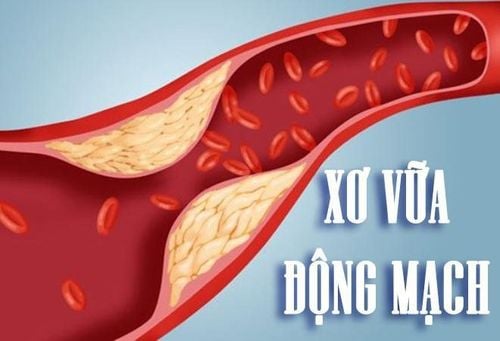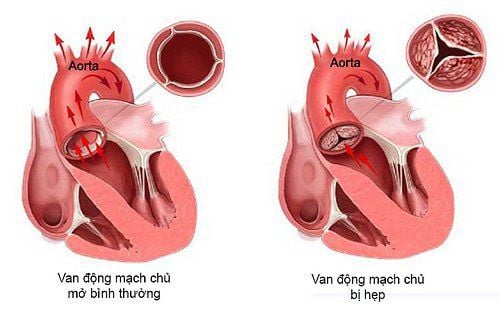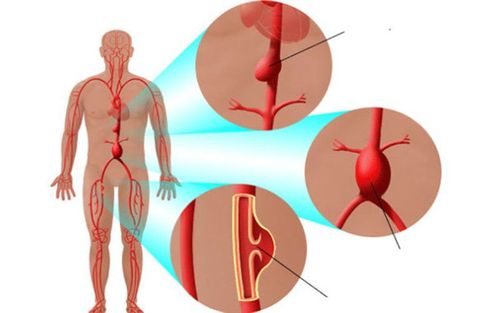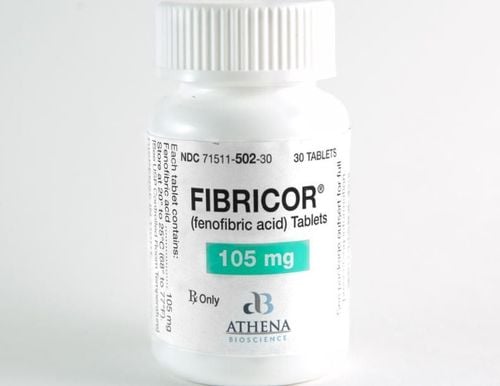This is an automatically translated article.
The article was professionally consulted by a Doctor of Cardiology - Thoracic Surgery, Vinmec Central Park International General Hospital.Thoracic aortic aneurysm is a permanent and irreversible dilation of the aorta. The incidence of thoracic aortic aneurysms is 2 to 5% of all aneurysms. What are the warning signs of a thoracic aortic aneurysm?
1. What is a thoracic aortic aneurysm?
Thoracic aortic aneurysm is a condition in which the transverse diameter of the aorta is measured to be 1.5 times larger or equal to the diameter of the remaining covering artery. Thoracic aortic aneurysms are generally divided into the following types:Savular thoracic aortic aneurysms : With the lateral side of the aorta bulging and asymmetrical. This is a pseudoaneurysm caused by trauma or penetrating aortic ulcer; Rhomboid thoracic aortic aneurysm: This is a true aneurysm because all three layers of the aortic wall are damaged. Abnormally long dilated thoracic aorta involving the entire circumference of the aortic wall; Thoracic-abdominal aortic aneurysm: Involves both the descending thoracic aorta and the abdominal aorta.
2. Signs of thoracic aortic aneurysm
Thoracic aortic aneurysms are usually asymptomatic and are discovered incidentally during routine physical examination or routine chest X-ray. However, some warning signs appear in patients with atypical symptoms as follows:Sudden pain in the chest or back: Pain is often vague, may feel pain in the neck and jaw area lower back, or pain between the shoulder blades, left shoulder pain, or back pain. When a thoracic aortic dissection, the pain comes on suddenly, like tearing in the front or back of the chest; Difficulty breathing, difficulty swallowing due to compression: When thoracic aortic aneurysm with a large extent can cause compression of surrounding structures or adjacent organs, leading to hoarseness (due to compression of the laryngeal nerve), dyspnea, dysphagia (due to tracheal and esophageal compression), edema (due to venous compression).
3. Complications and risks of thoracic aortic aneurysm

Xơ vữa động mạch làm tăng nguy cơ tiến triển bệnh phình động mạch chủ ngực
Atherosclerosis; Smoke; High blood pressure. The average rate of developing thoracic aortic aneurysm ranges from 0.42cm to 0.56cm/year. The larger the diameter of the thoracic aorta measured, the greater the risk of aneurysm rupture and death. This is the most serious and dangerous complication of the disease.
When not completely ruptured, causing shock and cardiovascular collapse, the patient often has symptoms such as: sudden and severe pain in the chest, abdomen or back; fast pulse, unmeasured or very low blood pressure; blood loss makes the skin and mucous membranes pale; Imaging tests reveal fluid in the pleura or retroperitoneum. In this case, the patient needs urgent emergency surgery, however, the prognosis is also very difficult.
Thoracic aortic aneurysm is an irreversible disease with serious complications that can be fatal. Therefore, it is necessary to detect early signs of the disease and treat it promptly to avoid unfortunate consequences.
Vinmec International General Hospital is the leading medical address for diagnosis and treatment of aortic aneurysms. It has all the necessary medical equipment to perform simple to complex treatments such as medical treatment, stent-graft intervention,... Professional medical team are highly qualified, have undergone training and are granted technical certificates, can handle quickly and effectively, especially in cases of urgent emergency. Therefore, patients with thoracic aortic aneurysms can rest assured with a strict, methodical and effective treatment process at Vinmec.
Please dial HOTLINE for more information or register for an appointment HERE. Download MyVinmec app to make appointments faster and to manage your bookings easily.













